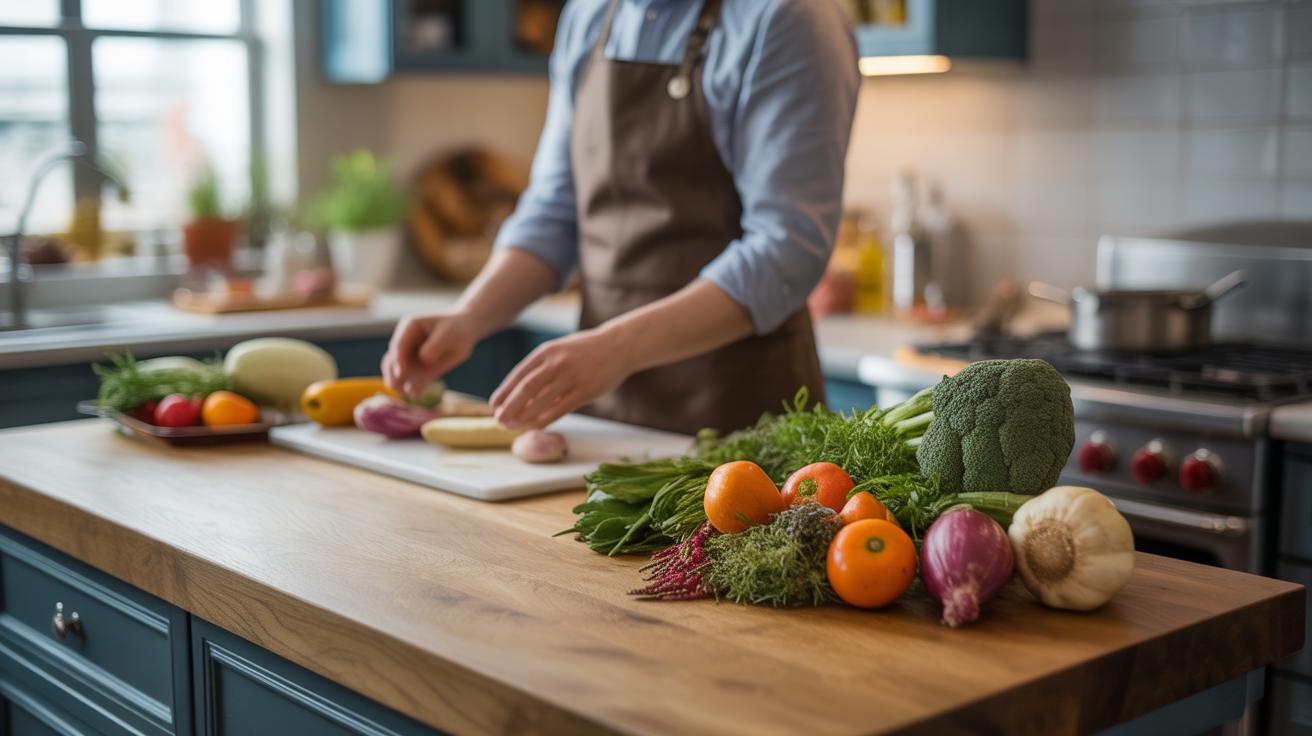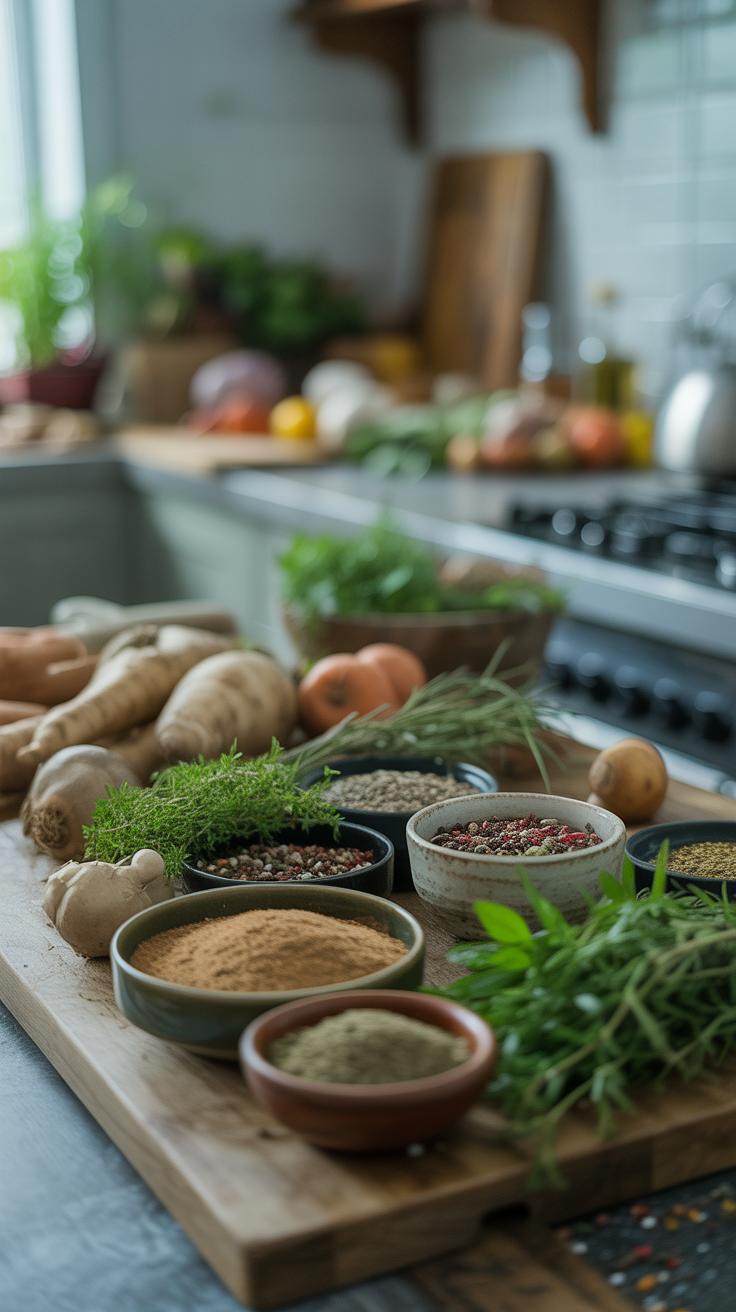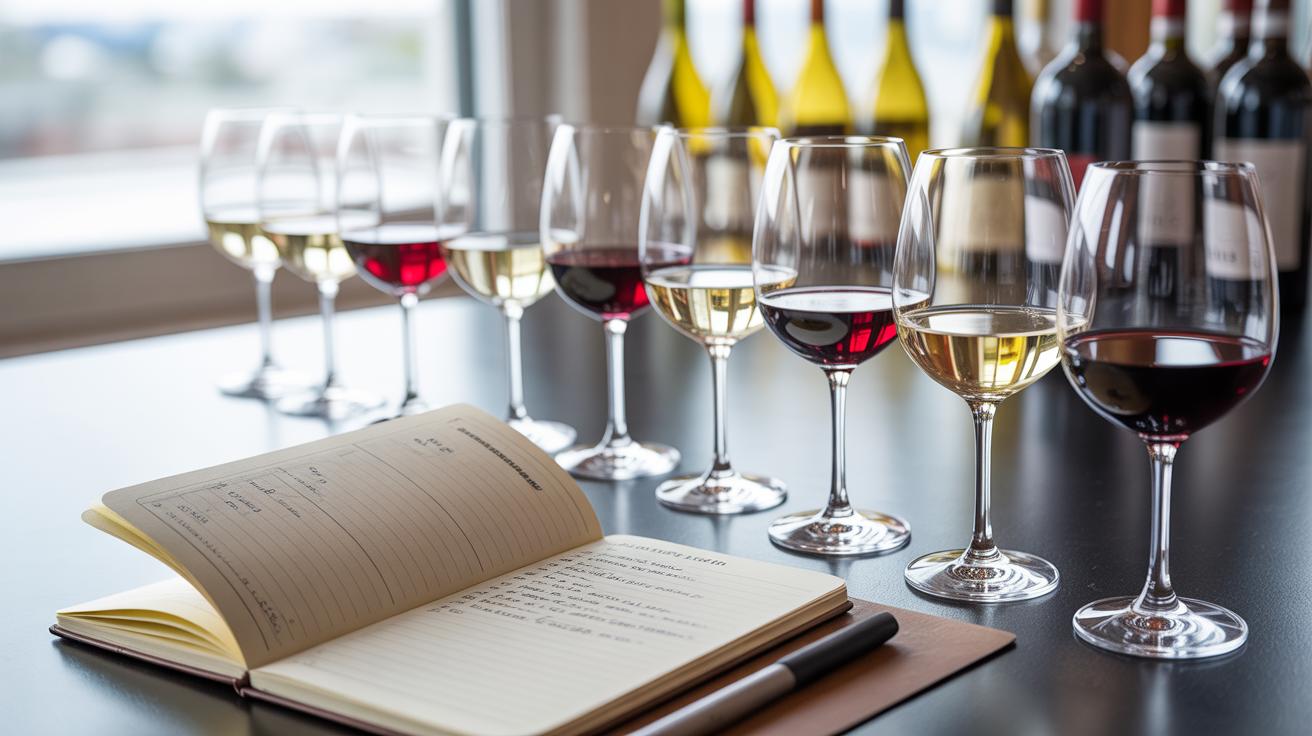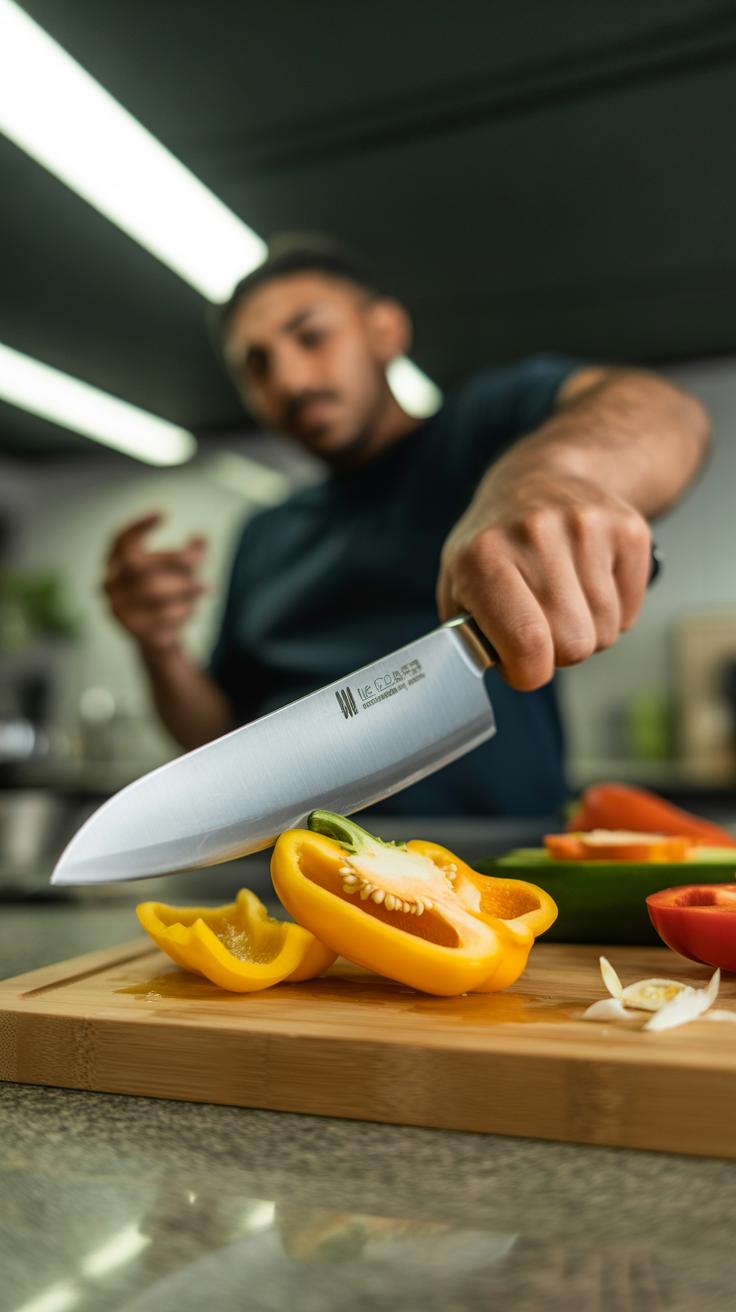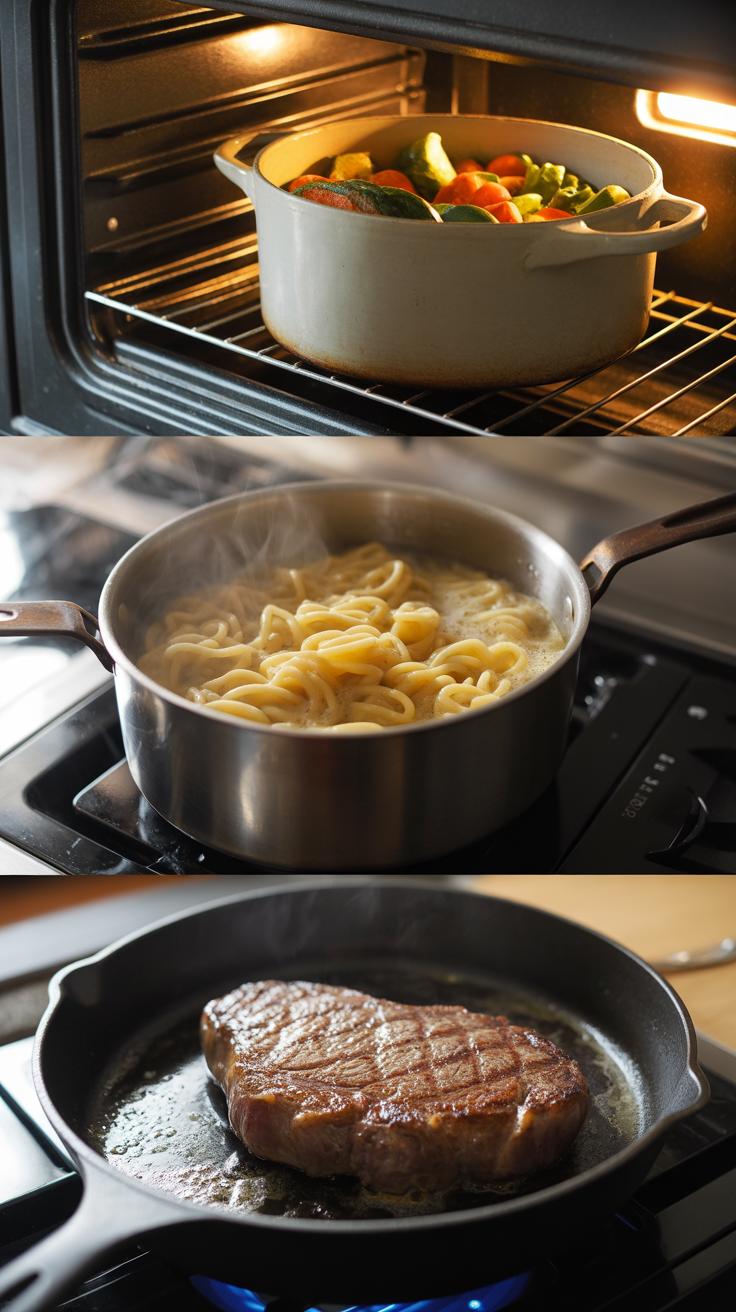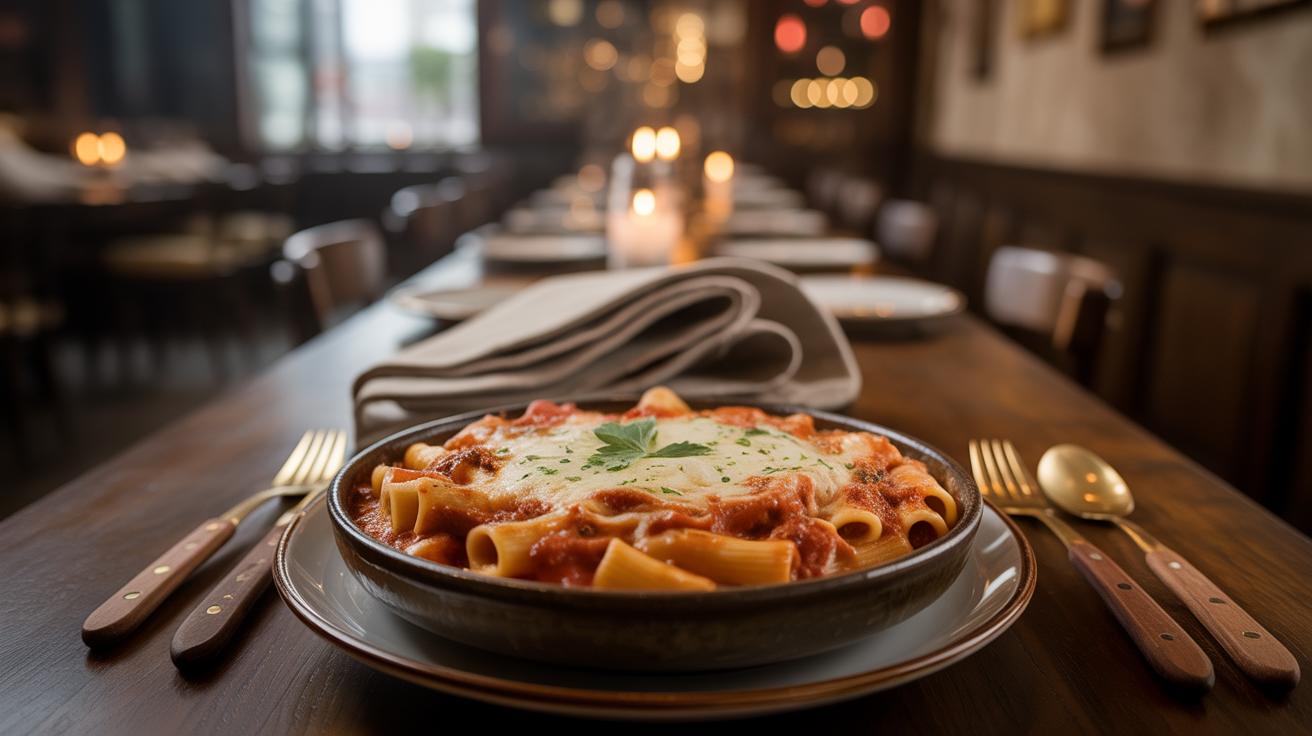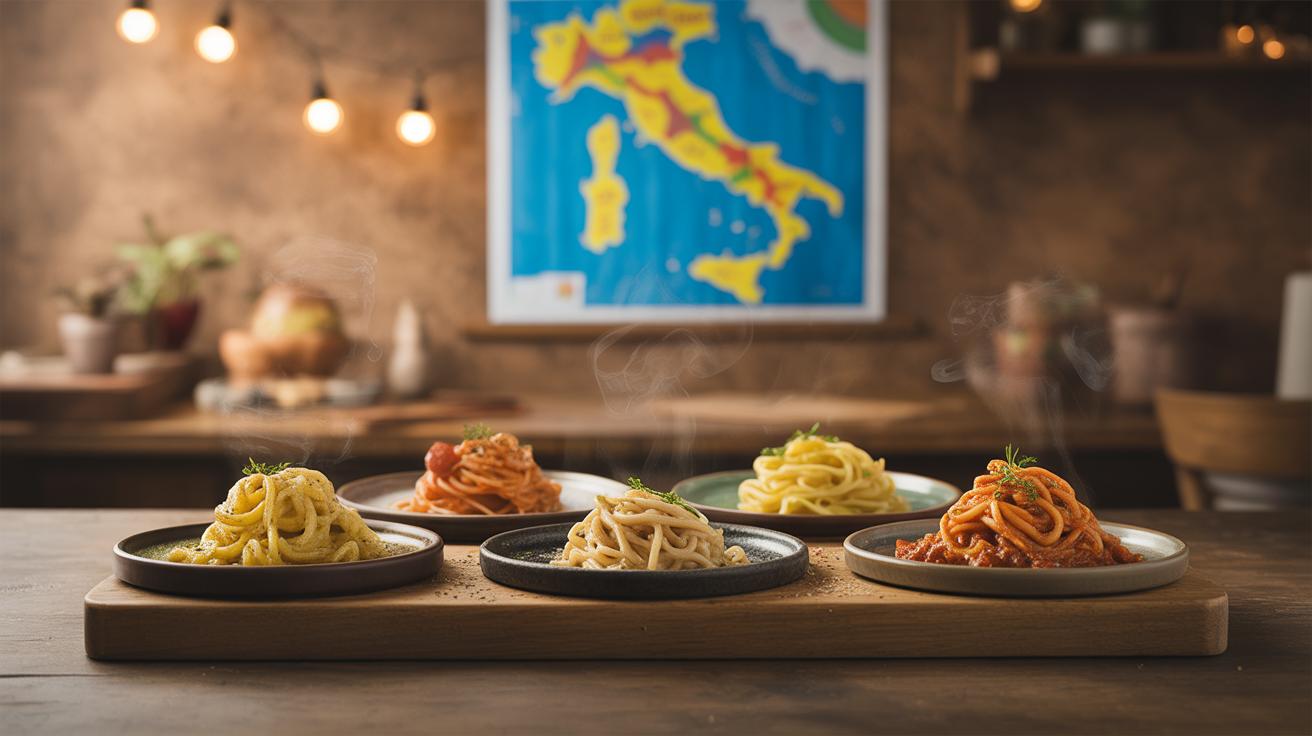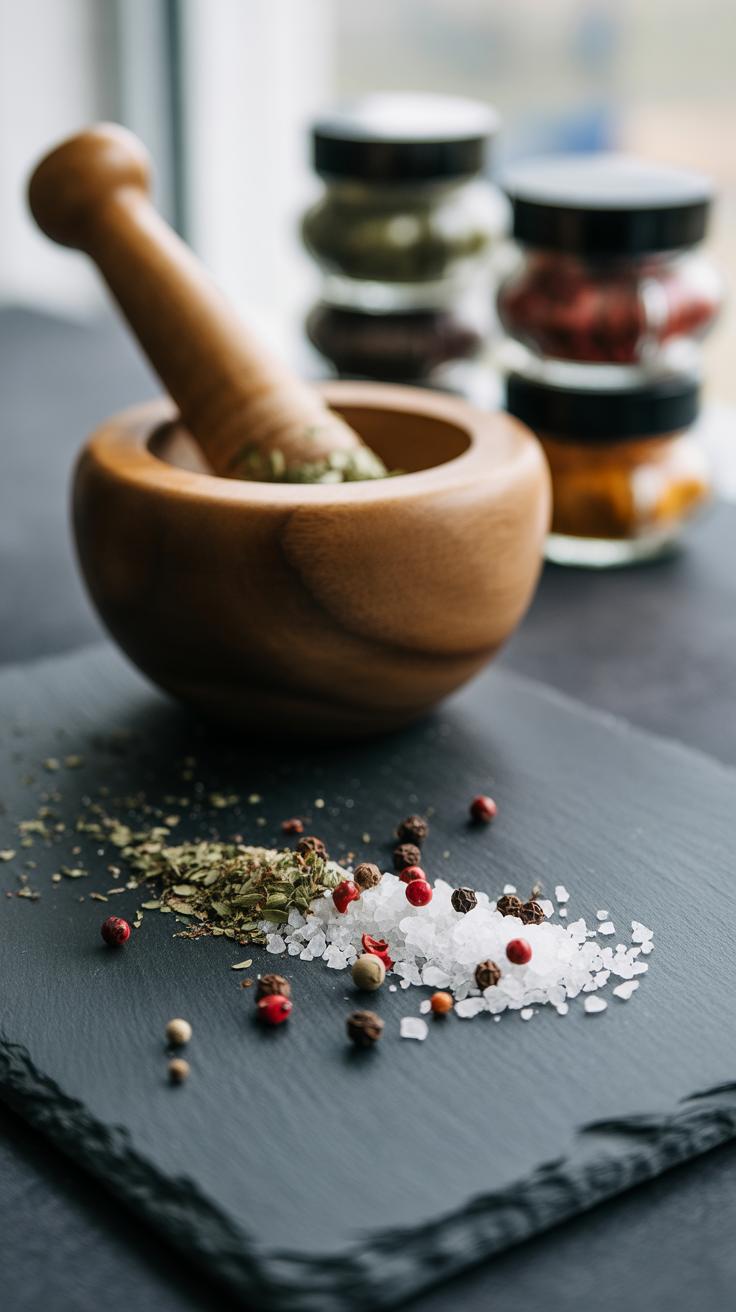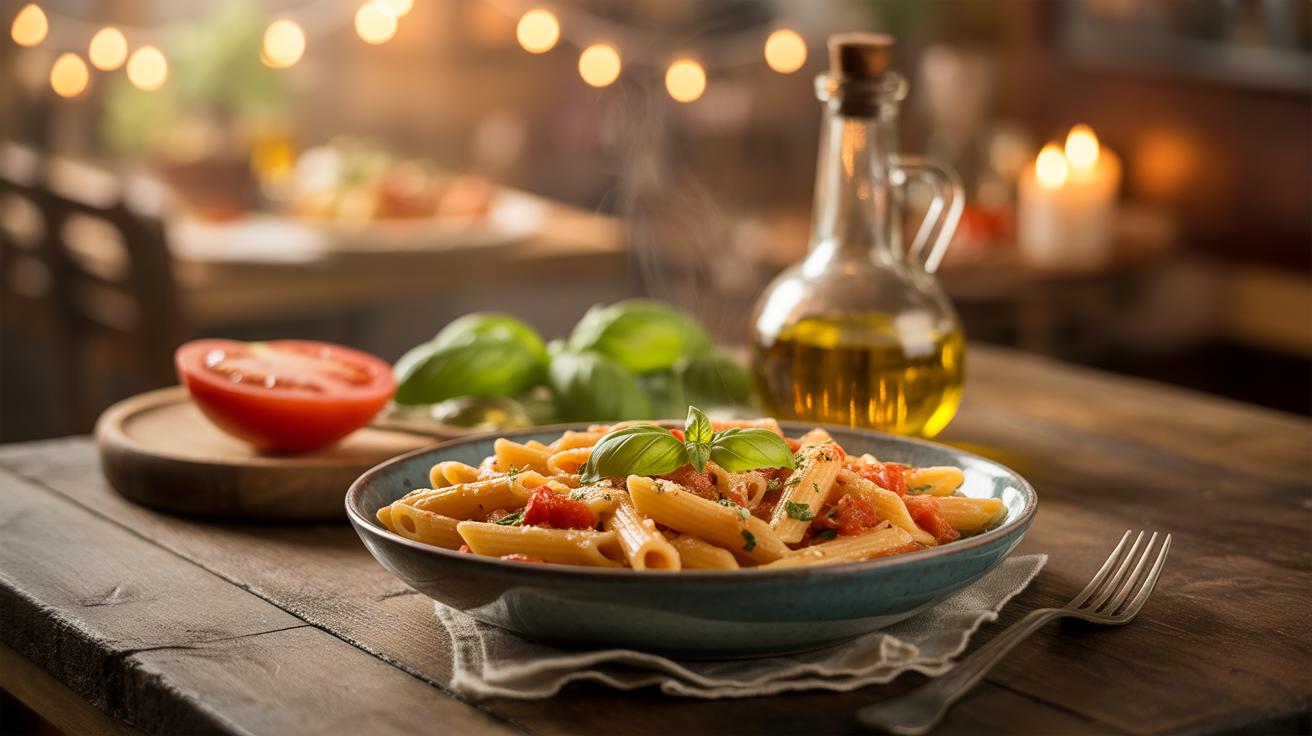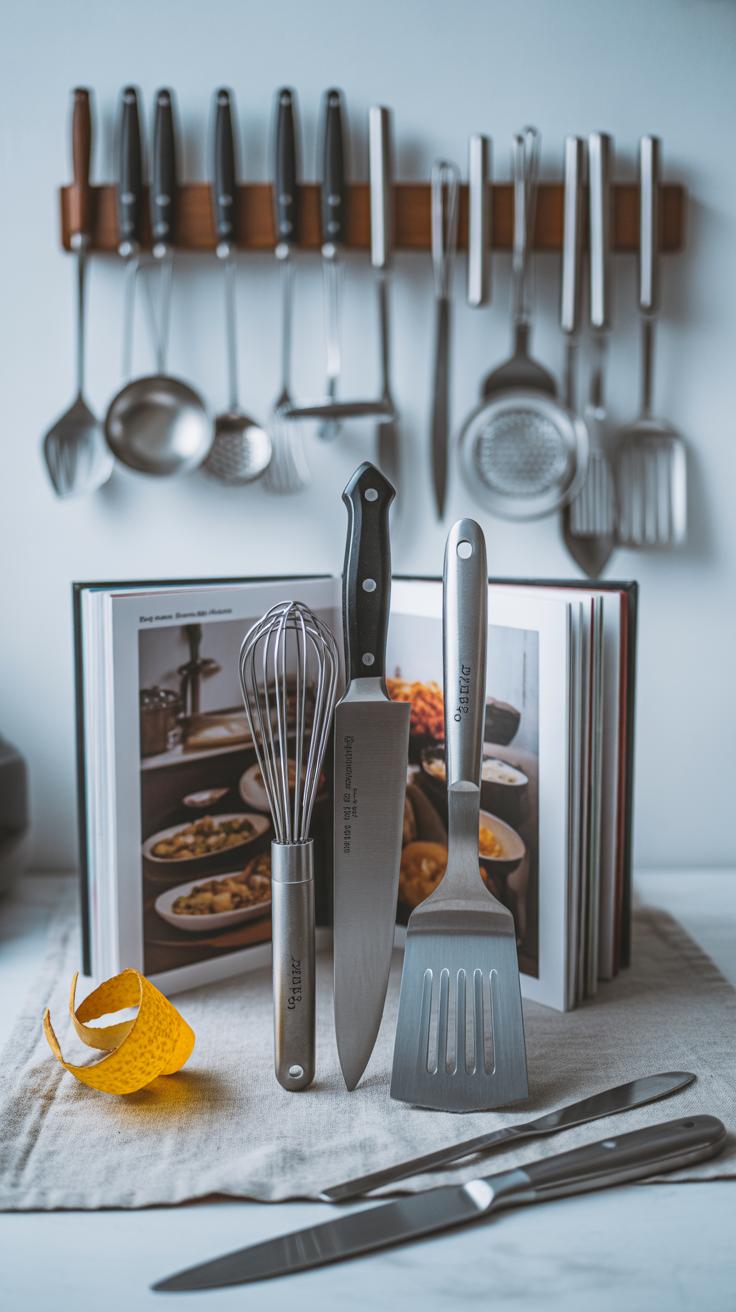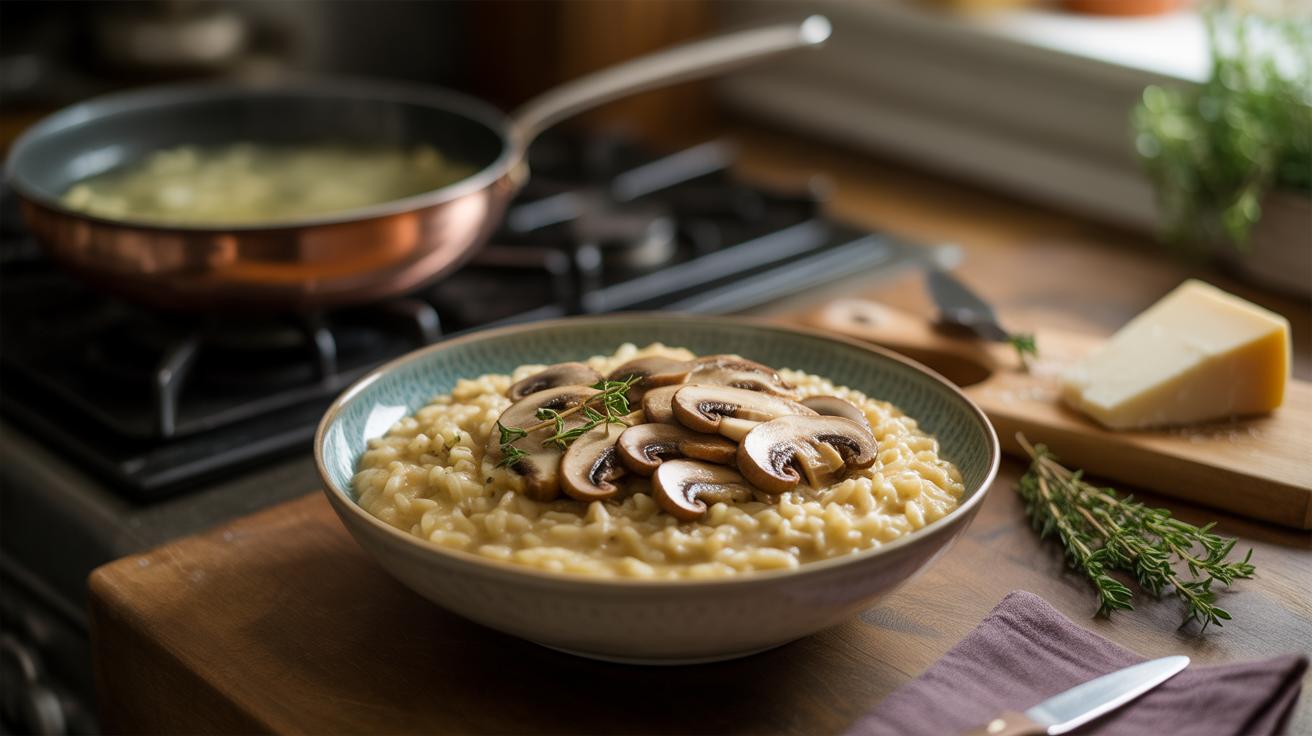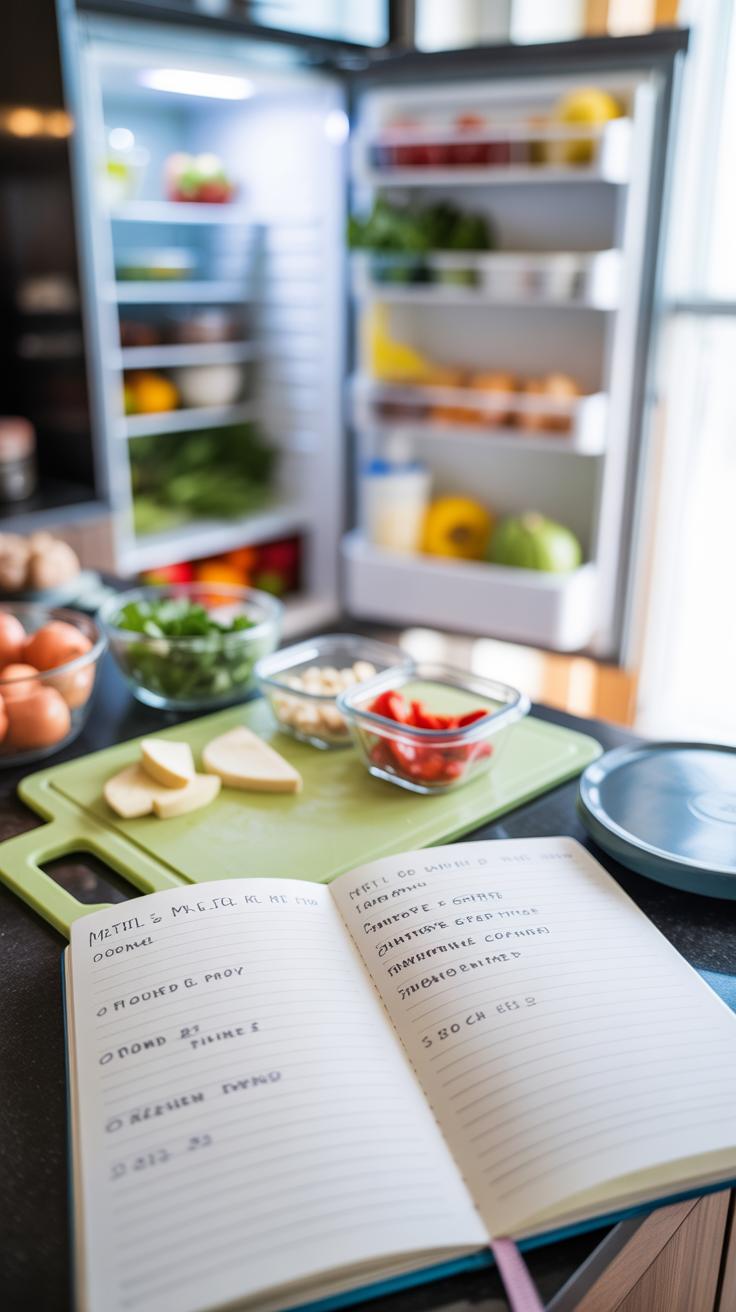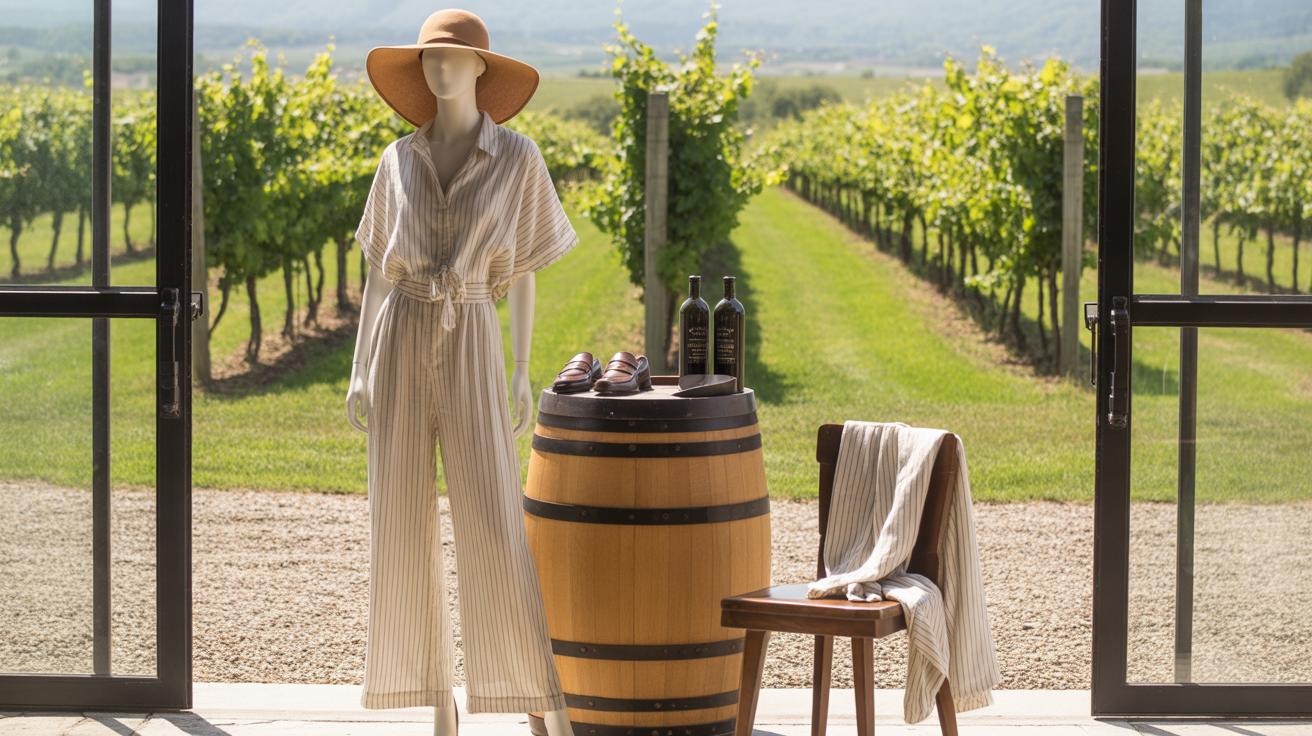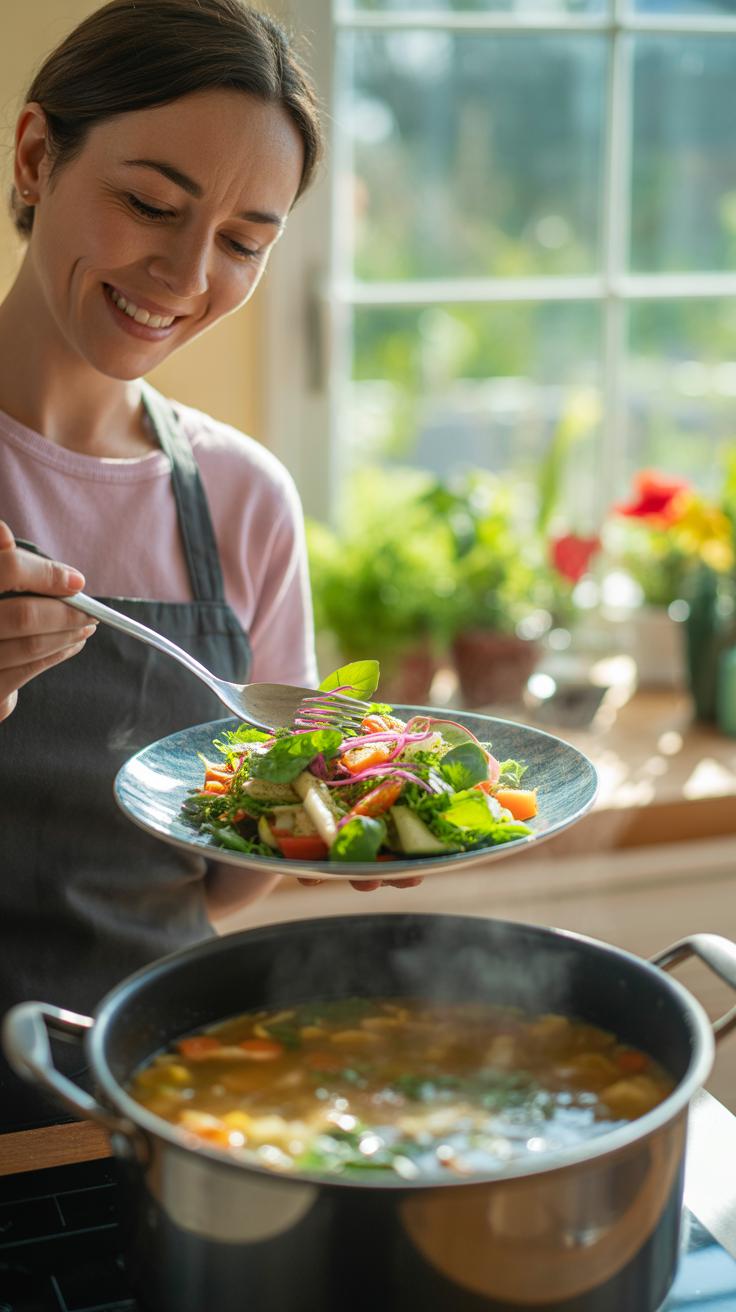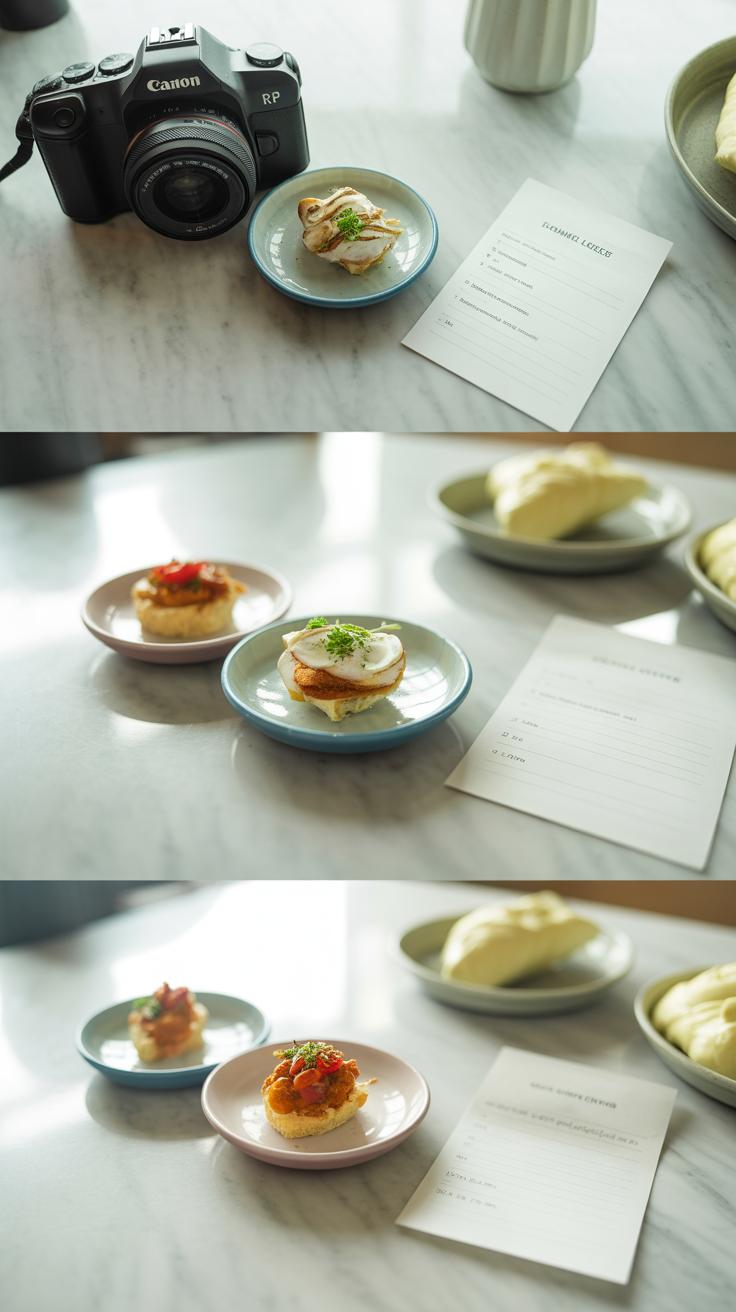Introduction
Mastering culinary basics is the foundation for anyone wanting to cook confidently at home. When you understand simple cooking techniques and key ingredients, cooking becomes easier and more enjoyable. This article will guide you through the essential skills you need to boost your kitchen confidence.
Whether you are new to cooking or want to refresh your skills, these basics cover everything from how to select fresh ingredients to proper knife handling. By the end, you will have clear, actionable tips to make your home cooking better every day.
Understanding Ingredients and Their Uses
Knowing your ingredients shapes the whole cooking experience. Vegetables provide texture and often freshness, proteins add substance and depth, and spices bring complexity and character. Think about a carrot—it’s sweet and crunchy when raw, soft and almost creamy when cooked. Proteins like chicken or tofu offer more than just nourishment; their cooking method can turn them chewy, tender, or crispy. Spices, though small in quantity, influence the mood of a dish profoundly. A pinch of cumin or a dash of cinnamon can change a meal from simple to memorable.
Each ingredient plays a role beyond just flavor. Some add body, others bring moisture or crunch. Recognizing these roles helps you balance dishes intuitively rather than following recipes blindly. Ever noticed how salt seems to bring out sweetness, or acidity brightens heaviness? That’s ingredients interacting at work.
Choosing Fresh and Quality Ingredients
Finding fresh ingredients doesn’t require a degree in botany or a meat expert’s nose—though that might help. You can rely on simple senses: look for vibrant colors in vegetables, firm textures in fruits, and clean, pleasant smells in meats. For example, a tomato should give a slight spring back when pressed; too soft means it’s past its prime. Leafy greens that wilt quickly won’t give you the crunch you want. When selecting meats, smell matters most—a fresh cut won’t have a strong odor, just a neutral, clean scent.
Pantry staples deserve attention, too. Flour should feel dry and free of lumps, oil should be clear with no rancid smell. These basics often get overlooked but they affect your outcome. Trusting your senses takes practice, but over time you’ll start to notice subtle differences that change flavors.
How Ingredients Work Together In Recipes
Balancing flavors means understanding the roles different ingredients play. Salt enhances, while sugar tempers sourness. Acidic ingredients like vinegar or lemon juice can lift richness and cut heaviness. For example, a simple salad with bitter greens becomes enjoyable with a touch of sweet honey and tangy lemon dressing. Similarly, roasted chicken tastes flat if unseasoned but brightens with a sprinkle of salt and herbs.
Texture matters, too. Crunchy nuts paired with smooth sauces create contrast. Think of how a creamy avocado feels alongside crisp onions. Sometimes, layering flavors happens step-by-step: sauté onions to add sweetness, then add spicy chili to ignite heat. Cooking is a bit like a conversation; ingredients respond to and balance each other in surprising ways. Curious about what happens when you swap one spice for another? Testing those small variations teaches you more than any cookbook can.
Mastering Basic Knife Skills
Getting comfortable with a knife is one of the first steps toward cooking with confidence. You might think it’s just about cutting food, but it’s really about control and precision, which matter more than speed or strength. Chopping, dicing, and slicing each require slightly different movements. For example, chopping usually means rough, uneven pieces—good for stews, where exact size doesn’t matter much. Dicing involves cutting into small, uniform cubes, which is handy when you want even cooking or a neat presentation. Slicing, on the other hand, often calls for thin, consistent cuts, like for vegetables or meats.
Safety can’t be overstated—you really do want to handle your knives properly to avoid slips or accidents. It sounds obvious, but many new cooks don’t hold the knife right or fail to keep the blade steady. I remember struggling with a chef’s knife until I learned to grip it firmly by the handle and hold the item being cut with fingers curled inward, away from the blade. It feels awkward at first, but it instantly reduces the chance of cutting yourself. Also, keeping knives sharp is safer than dull ones—they require less force, so you don’t end up pushing too hard.
Knife Types and Their Uses
Not all knives are created equal. Each type serves a purpose, and knowing which one to use can save time and improve your results.
- Chef’s knife: This is the everyday workhorse, usually about 8 inches long. It’s versatile for chopping vegetables, slicing meat, or even crushing garlic. You probably want to start here.
- Paring knife: Smaller, with a blade around 3 to 4 inches. It’s perfect for peeling, trimming, or those detailed cuts on fruits and vegetables.
- Serrated knife: The saw-like edge is great for bread or tomatoes. It cuts through tough or slippery skins without crushing the soft inside.
You might notice yourself reaching for the chef’s knife most of the time, and that’s fine. But learning when to switch to a paring or serrated knife can make your prep easier and cleaner.
Step By Step Safe Cutting Techniques
One handy way to improve knife safety is by focusing on your grip and posture. Here’s a rough guide you can try out:
- Hold the handle of the knife firmly but not too tight—like you’re shaking someone’s hand.
- Place your thumb and the side of your index finger on the blade’s base, near the handle, for more control.
- Keep the fingers of your other hand curled inward, the knuckles acting as a guide for the blade.
- Position yourself close to the cutting board with feet planted comfortably—lean a little but don’t cross your arms or hunch.
- Use a rocking motion with the chef’s knife, keeping the tip down and moving the blade in a smooth arc.
Patience matters here—you may want to slow down until these motions feel natural. I remember feeling awkward at first, but focusing on control instead of speed helped me avoid mistakes. Trust me, rushing usually leads to slips, so just ease into the rhythm.
At the end of the day, knife skills are a mix of muscle memory and respect for the tool. Keep practicing, stay cautious, and you’ll notice a real difference in your prep work.
Cooking Methods Everyone Should Know
Basic cooking methods
Boiling is a straightforward way to cook foods like pasta, potatoes, or eggs. You just submerge them in rapidly bubbling water until they get tender. It’s reliable for softening ingredients but can wash out some flavors if you’re not careful.
Sautéing involves cooking food quickly in a small amount of hot oil or butter. It’s perfect when you want to develop some color and keep vegetables crisp or cook thin cuts of meat. The short, intense heat brings out a lot of taste without making things soggy.
Baking uses dry, even heat in an oven. This method suits breads, casseroles, and roasted meats. It’s slower than boiling or sautéing but creates textures and crusts you can’t get on the stovetop.
Grilling cooks food over direct heat, often outdoors. Flames or hot coals give a smoky edge and char that’s hard to replicate. It’s great for hearty cuts of meat or vegetables with firm textures.
How heat changes food
Applying heat transforms food’s texture and taste. Proteins firm up and tenderize, starches soften, and moisture evaporates. But more importantly, browning happens—like when meat or onions turn golden. This browning is not just color change; it’s flavor-building through chemical reactions that create complex aromas.
Softening is another key effect—vegetables become easier to chew and digest. Still, sometimes too much heat loses crunch or brightness. There’s that balance between undercooking and overcooking that you kind of have to feel out.
Heat also prompts flavors to develop or combine. Cooking garlic slowly brings out sweetness rather than raw bite, for example. It’s fascinating how something as simple as temperature can shift the entire eating experience.
Choosing the right method for your dish
Think about what you want from your ingredients: texture, flavor, speed. If you want tender greens fast, a quick sauté works well. For a stew or soup, boiling lets flavors meld over time.
Lean meats often benefit from grilling or sautéing to keep juiciness and add char. Tougher cuts might need longer baking or braising to break down fibers.
For example:
- Chicken breasts: sauté for quick cooking, grilling for smoky notes
- Potatoes: boil for mashing, bake for crisp skins
- Fish: gentle baking keeps it moist, grilling adds texture but can dry it out if careless
Perfecting which cooking method fits best comes a bit from trial, and a little from intuition. Do you want to explore what your food can become if you treat it differently? It’s often worth experimenting.
Understanding Seasoning and Flavoring
Seasoning is more than just sprinkling salt and pepper. It’s about building layers of taste that speak to each other. Start with salt—it brings out natural flavors by balancing bitterness and enhancing sweetness. Pepper adds a sharp, mild heat, but timing matters. I’ve found that seasoning meat early and vegetables later makes a difference. Salt early helps draw moisture and forms a better crust when cooking. Pepper too soon can burn and turn bitter, so I often wait to add it near the end.
Herbs and spices can feel tricky. Fresh herbs like parsley or basil offer brightness, added at the last minute to preserve their aroma. Dried herbs are more concentrated, best in slow-cooked dishes where they have time to soften. Common spices like cumin, cinnamon, or paprika each shift a dish in unexpected ways. Play with combinations—maybe paprika with a pinch of cinnamon in chili—for depth.
Consider layering seasonings throughout cooking, not just at the end. It creates a more complex taste, though sometimes a simple pinch of salt at the right moment works just as well. Do you often forget seasoning until the very end? Try tasting your dish mid-cook and adjust gradually. It changes everything.
Essential Kitchen Tools and How To Use Them
Knives, Pans, and Measuring Tools
You’ll find almost every recipe depends on a few basic tools. For knives, a chef’s knife is your go-to for a wide range of tasks—chopping veggies, slicing meats, even mincing herbs. A paring knife handles smaller jobs like peeling or trimming. And if you ever find yourself cutting bread or tomatoes, a serrated knife comes in handy. Each has its place, and using them interchangeably often slows you down or risks uneven results.
When it comes to pans, a simple skillet—preferably nonstick or stainless steel—works well for sautéing or frying. A saucepan with a lid is key for simmering sauces or boiling grains. A heavy-bottomed stockpot covers soups or large batches. Trying to cook stew in a frying pan? It might work, but you’ll probably not get the texture or flavor you want.
Measuring cups and spoons are often overlooked but essential, especially if you’re new to cooking. Dry cups measure flour, sugar, or grains, while liquid cups—with a spout—are designed for milk or broth. Spoons help with smaller quantities like spices or baking powder. Guessing measurements can sometimes work, but consistent results come from measuring.
How Good Tools Make Cooking Easier
Using the right tool for the task usually saves time and reduces frustration. For instance, a sharp chef’s knife allows quicker, safer chopping. I remember when I tried cutting onions with a dull knife—it was slower and tear-inducing. When I switched to a sharp one, prep became smoother and even enjoyable.
Similarly, cooking eggs or pancakes on a nonstick pan keeps them from sticking, cutting cleanly, which makes flipping or cleaning faster. Using an unsuitable pan can mean uneven cooking or burning—something I’ve experienced more times than I care to admit.
Measuring precisely can change your whole dish. One time, I eyeballed salt in a soup, and the result was off—too bland. Later, using a measuring spoon helped balance it perfectly. It’s a small detail, but it matters.
So, when you’re setting up your kitchen, think about what makes your cooking easier or more pleasant. Is sticking with one multi-purpose knife really best, or would a small set help you do things better? The right tool often means less work and better results—and that’s worth considering every time you cook.
Planning and Preparing Your Meals
Trying to figure out what to cook every day can be overwhelming. That’s where meal planning steps in to save you time and reduce stress. Instead of endless last-minute decisions, take a moment once a week to pick recipes you actually want to eat. I find it helps to lean towards simple dishes that share some ingredients—less waste and fewer trips to the store.
When making a meal plan, think about balancing proteins, carbs, and vegetables. Choose meals that fit your schedule too; something quick after a busy day, and maybe more involved when you have extra time. Write down what you need. Creating a shopping list from your recipes prevents that frustrating “I forgot the onions” situation at checkout.
Prepping ingredients ahead changes the whole cooking game. Washing greens, chopping veggies, even marinating meats before cooking means less frantic chopping right before dinner. If you’re like me, you might sometimes skip this and regret it later. But setting aside fifteen minutes to prep can make a big difference.
Store prepped ingredients with care: airtight containers for chopped items, damp towels for herbs. It keeps everything fresher and ready to go. You could try washing all your vegetables as soon as you get home—then they’re ready whenever you need. It’s a bit of effort upfront, but it pays off in ease and calm when mealtime arrives.
Cooking With Confidence Every Day
Confidence in the kitchen doesn’t show up overnight. It grows slowly, the more you cook, taste, and sometimes mess up. You might think you need perfect timing or fancy gadgets, but really, it’s about regular practice. Try cooking small dishes often, not just the big Sunday dinners. This keeps your hands in the rhythm and your mind engaged.
Taste your food as you cook—don’t wait until the very end. This little habit helps you notice what’s missing or what’s too strong. Maybe your soup lacks salt, or your sauce needs a bit more acid. Trusting your taste buds lets you make adjustments early, so the final dish feels balanced, even if you’re not following a recipe exactly.
And when things go sideways—like burnt veggies or over-salted stew—don’t let it discourage you. Mistakes teach more than success sometimes. Ask yourself: What went wrong? What would I try differently next time? Each slip-up adds a small lesson that builds your skills over time. So, be curious about your errors instead of frustrated. It’s all part of learning to cook without second-guessing every move.
Simple Recipes To Build Your Skills
Starting small helps. Basic breakfasts and snacks like scrambled eggs or smoothies aren’t just quick fixes—they’re perfect lessons in timing, texture, and flavor balance. Scrambled eggs teach you to control heat and use a spatula gently, while a smoothie introduces blending proportions and ingredient pairing. These dishes seem simple, but they quietly build essential skills you’ll use over and over.
For lunch or dinner, focus on straightforward meals like pasta with a basic sauce or a quick stir-fry. Cooking pasta involves boiling with attention to timing—too soft or too firm makes a big difference. A stir-fry gives practice in cutting vegetables evenly, managing high heat, and seasoning step-by-step. You’ll get a feel for how flavors build, and that helps pepper in confidence you didn’t know you needed.
How many times have you thought a recipe looked too easy to teach anything new? You might want to try again, since mastering these straightforward dishes can actually transform how you cook overall. It’s not just about making food; it’s about understanding how to make it well, every time.
Conclusions
Good cooking starts with mastering the basics. When you know your ingredients and how to handle tools safely, you set yourself up for success. Every meal you create becomes a chance to practice and improve.
Keep exploring new recipes while using these foundational skills. Soon, you will cook with confidence, creativity, and joy. Your kitchen can truly become your favorite place.

